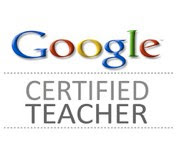As you can see I have neglected this blog for years, and it is growing weeds (in the form of spam comments). However, it feels like the most appropriate place for me to pour out my thoughts and memories of my dear mentor and friend, Silvia Tolisano. Of course, Silvia did not approve of me hosting my blog on Blogspot and always encouraged me to have my own domain (which I did for a while....but alas...).
I first met Silvia through blogging. Like so many people, I immediately recognized her brilliance, and I wanted her to be my mentor. I did not ask her but just proceeded as if it were so, and through some serendipity, it came to be. We told the story years later in this video which, of course, Silvia documented and shared.
That was in 2008 and I consider Silvia one of the great gifts of my life. I admired everything about her and learned so much from her. I simply can not believe that her life ended so suddenly this week. I am bereft and grieving for this amazing woman and her beloved family.
Silvia was true-blue, the real deal.
In the social media, edublogging world of vying for an audience, Silvia just did her work with impeccable focus and stereotypically German high standards, and shared it all on her blog, Langwitches. She grew a faithful following through the incredible resources that she created and shared freely. If we encountered a challenge with our students, Silvia was not content to simply solve it. The solution must be documented (in a graphically pleasing and accessible way) and shared so that other educators might benefit from the experience as well as improve the process through the addition of their own ideas and input. The cycle of transparent learning and growth was just her way of working.
Silvia was also the real deal as a human being, applying the same focus and standards to her personal life as she did to her work. I admired her so thoroughly and enjoyed working with her so much that I was not content to have her only as a professional mentor. I wanted her to be my friend. As much as Silvia was calm and self-contained, I am equally emotional and effusive. She gently drew a boundary that took me many years to dissolve, but we did become friends, and I valued that friendship deeply.
It is not hyperbole to say that Silvia shined like the brightest star. She led always by example. She made things look easy (and maybe for her they were) because she was so organized, so talented, so articulate (in three languages!) And she expected that level of quality from everyone else. But in equal measure, Silvia was kind, understanding and compassionate. She was also quite funny and told wonderful stories. I traveled with her often and never got tired of hanging out with her.
She was my mentor at work for many years, and for that I was amazingly fortunate. But I also aspired to learn from her in the personal realm. She inspired me with her self-discipline and personal goals (like her relatively recent passion for running) as well as her ethical standards and consistent, positive impact on those around her. And I hold dearly to the example Silvia set in her family life. She was an incredible mother, daughter, wife, sister and grandmother. She was the hub in the center of a beautiful, close-knit family.
Today, March 5th, a "Facebook memory" notification popped up of this picture from my son's bar mitzvah, 4 years ago.





































